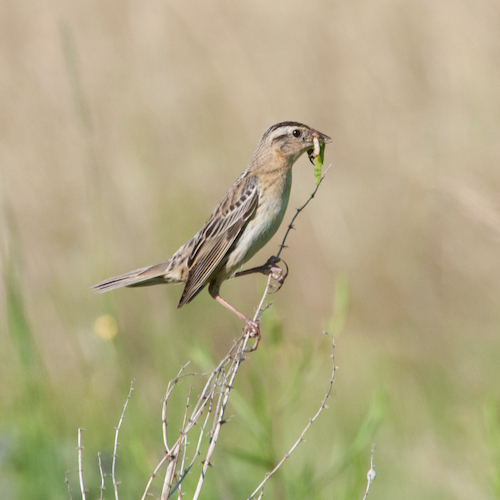

|
Bobolinks, Savannah sparrows and eastern meadowlarks enrich our summers with their songs, but their populations continue to suffer long-term declines due to the loss in quantity and quality of their grassland habitat.
“These species continue to experience long-term population declines across the continent, and on Vermont’s grasslands, especially in large fields and in open landscapes, there are opportunities to help,” said Rosalind Renfrew, biologist for the Vermont Fish and Wildlife Department.
Landowners can make a difference by altering the times of year they mow fields. Fish and Wildlife is encouraging landowners to help these beloved species by waiting to mow fields used by grassland birds, giving them a chance to rear their young.
“People maintain open, grassy fields in Vermont for a variety of reasons, from producing hay to providing pasture for grazing, to simply maintaining scenic beauty,” said Renfrew. “For those who can afford it, the timing of mowing or brush hogging can be adjusted to allow grassland birds to successfully raise young."
Bobolinks, Savannah sparrows, eastern meadowlarks and wild turkeys build their nests right on the ground, among the grasses and wildflowers. Deer fawns and other animals take refuge in grass fields, and other birds such as bluebirds, kestrels, whip-poor-wills, and northern harriers rely on grass fields for food.
According to Renfrew, landowners who do not need to mow for animal forage can accommodate nesting birds by cutting late in the summer, preferably after August 1. When you do mow, Renfrew advises to keep an eye out for unwanted plants.
People concerned about invasive plants such as parsnip, bedstraw, or chervil may choose to rotate mowing earlier and more frequently on a portion of their field each year, to keep these plants in check.
“The birds don’t like fields dominated by invasives any more than we do,” says Renfrew.
“Mowing before unwanted plants go to seed can help prevent them from spreading. Although this means temporarily sacrificing some nesting habitat, it better maintains the entire field over the long term.”
Landowners who face a loss of income from delaying mowing can apply for assistance through the Natural Resources Conservation Service EQIP program or The Bobolink Project.
You can learn more about conserving Vermont’s grasslands on Vermont Fish and Wildlife’s website.